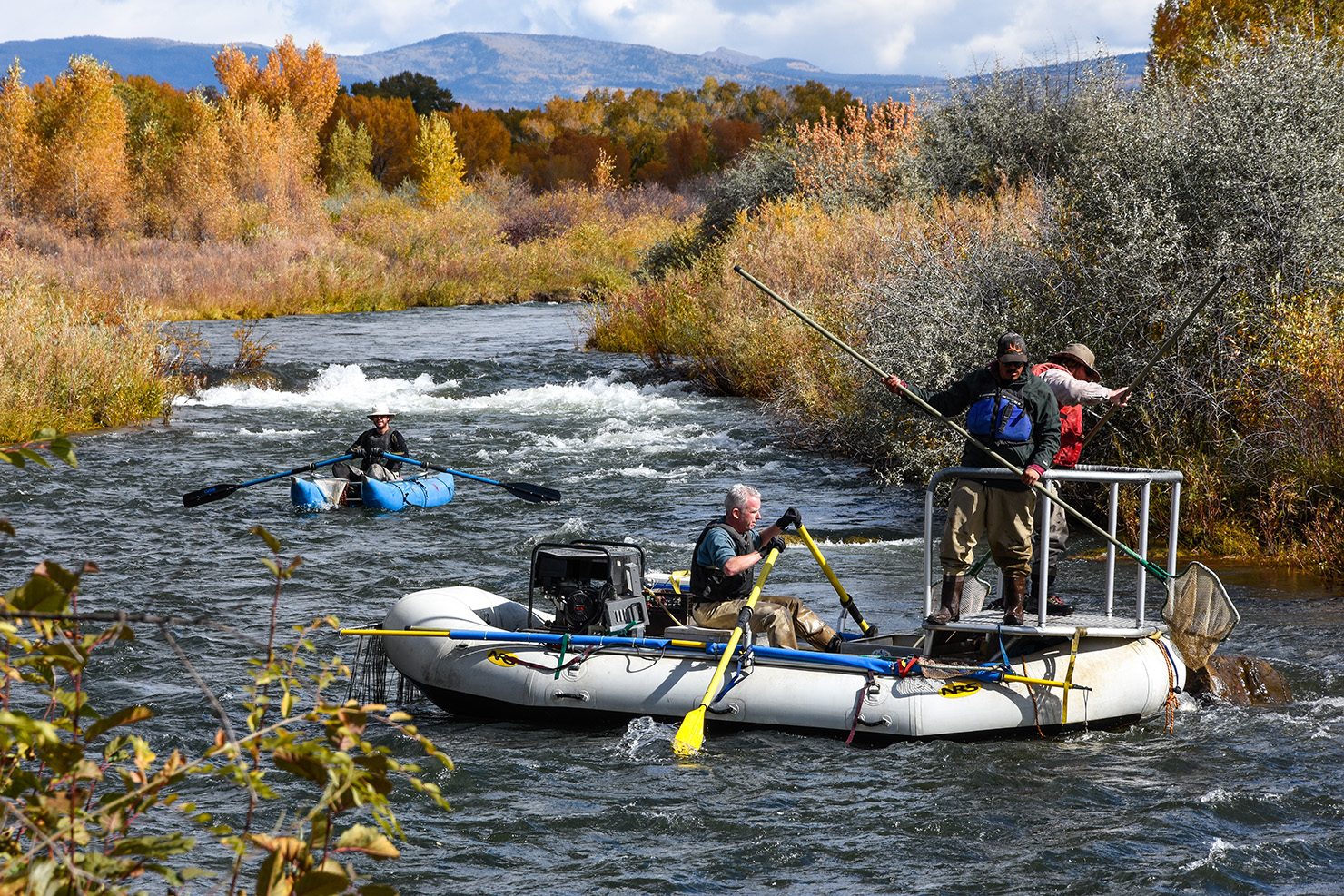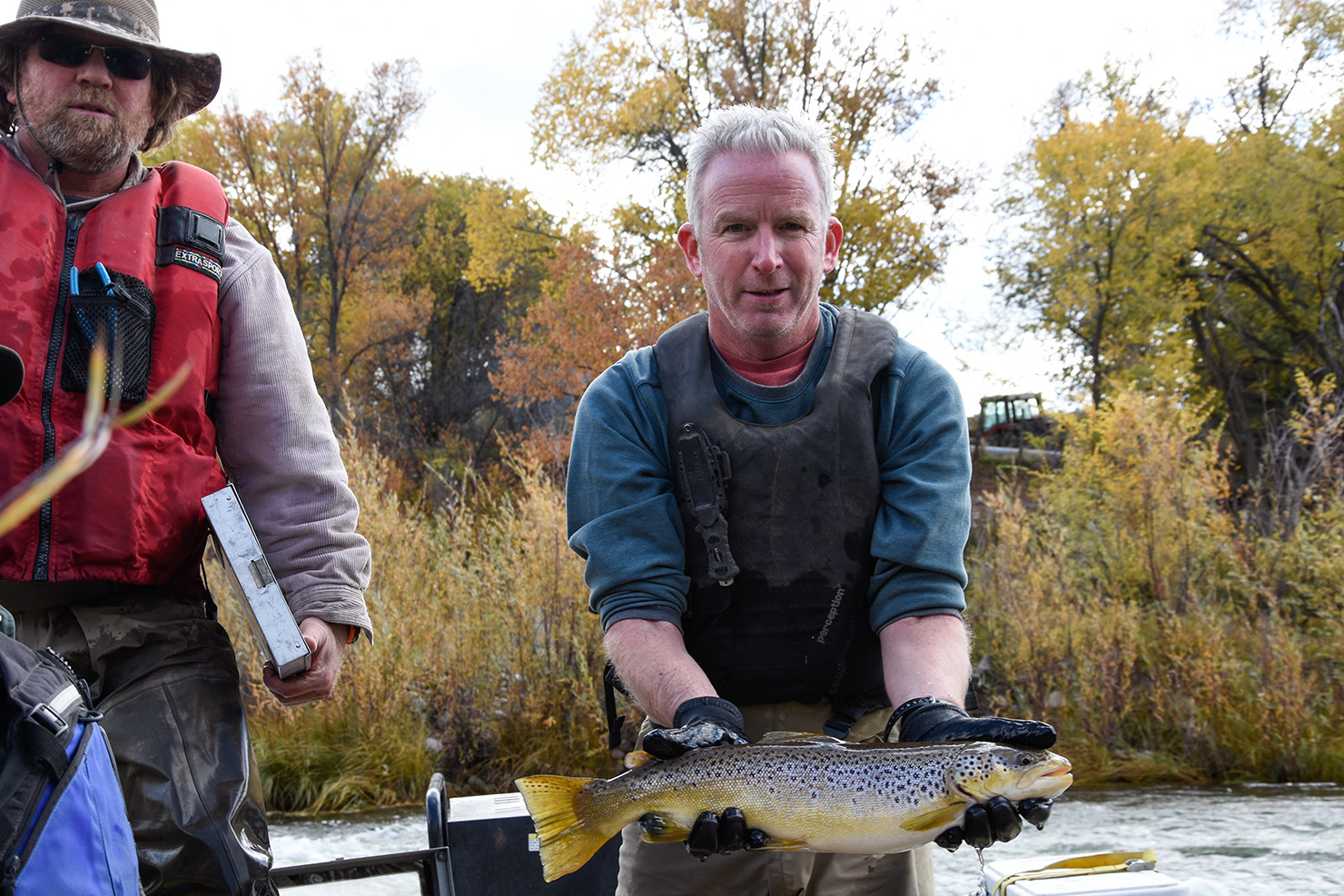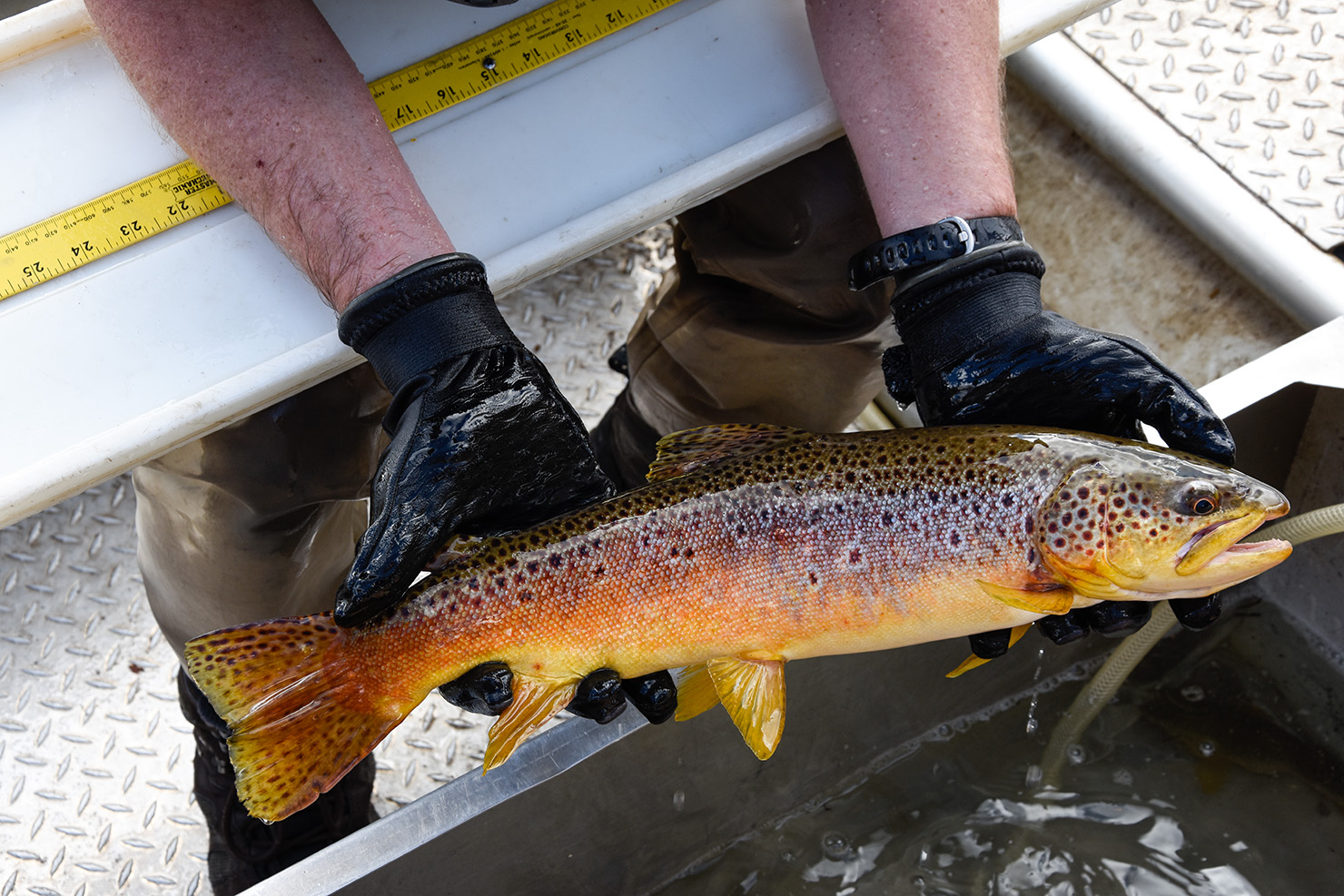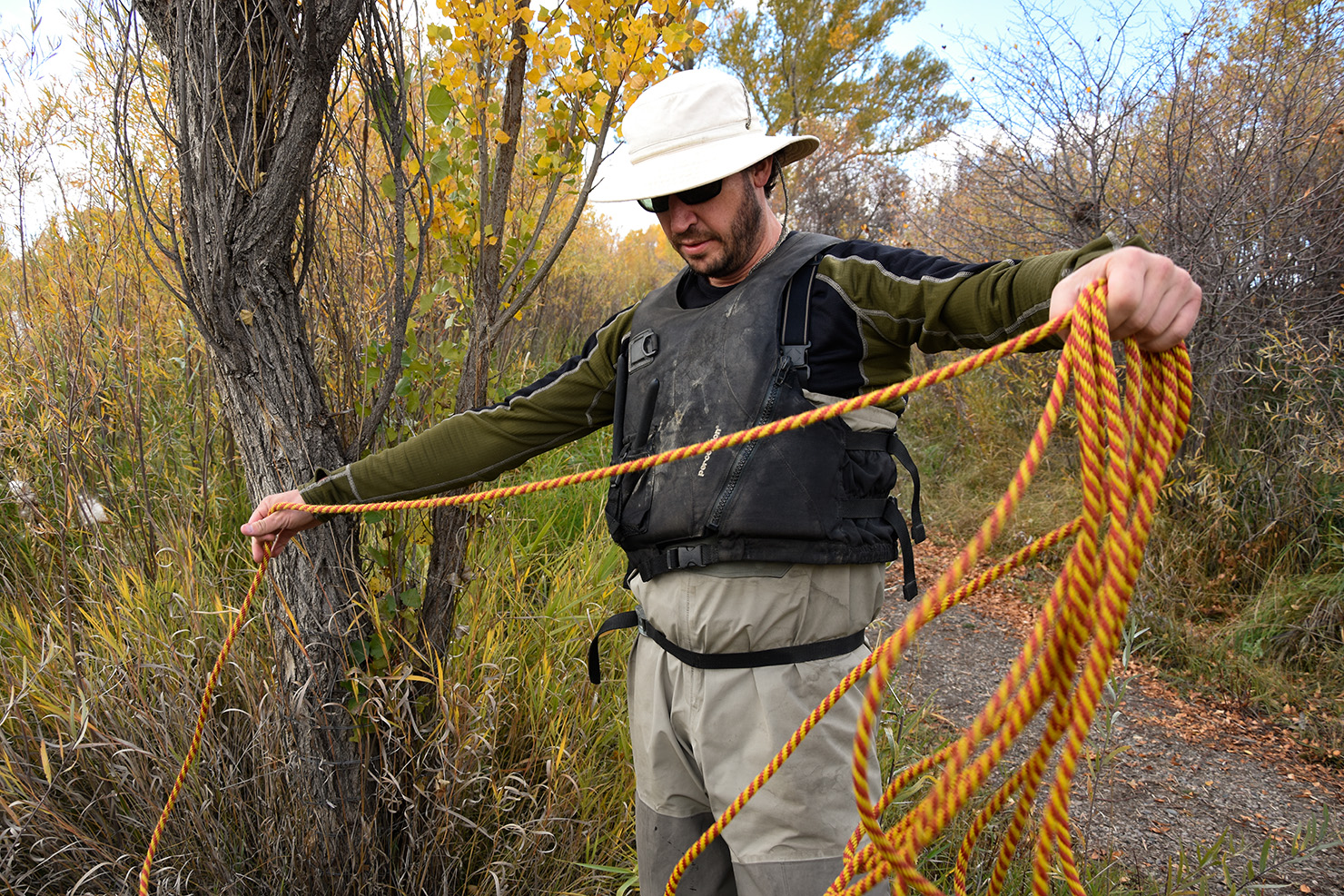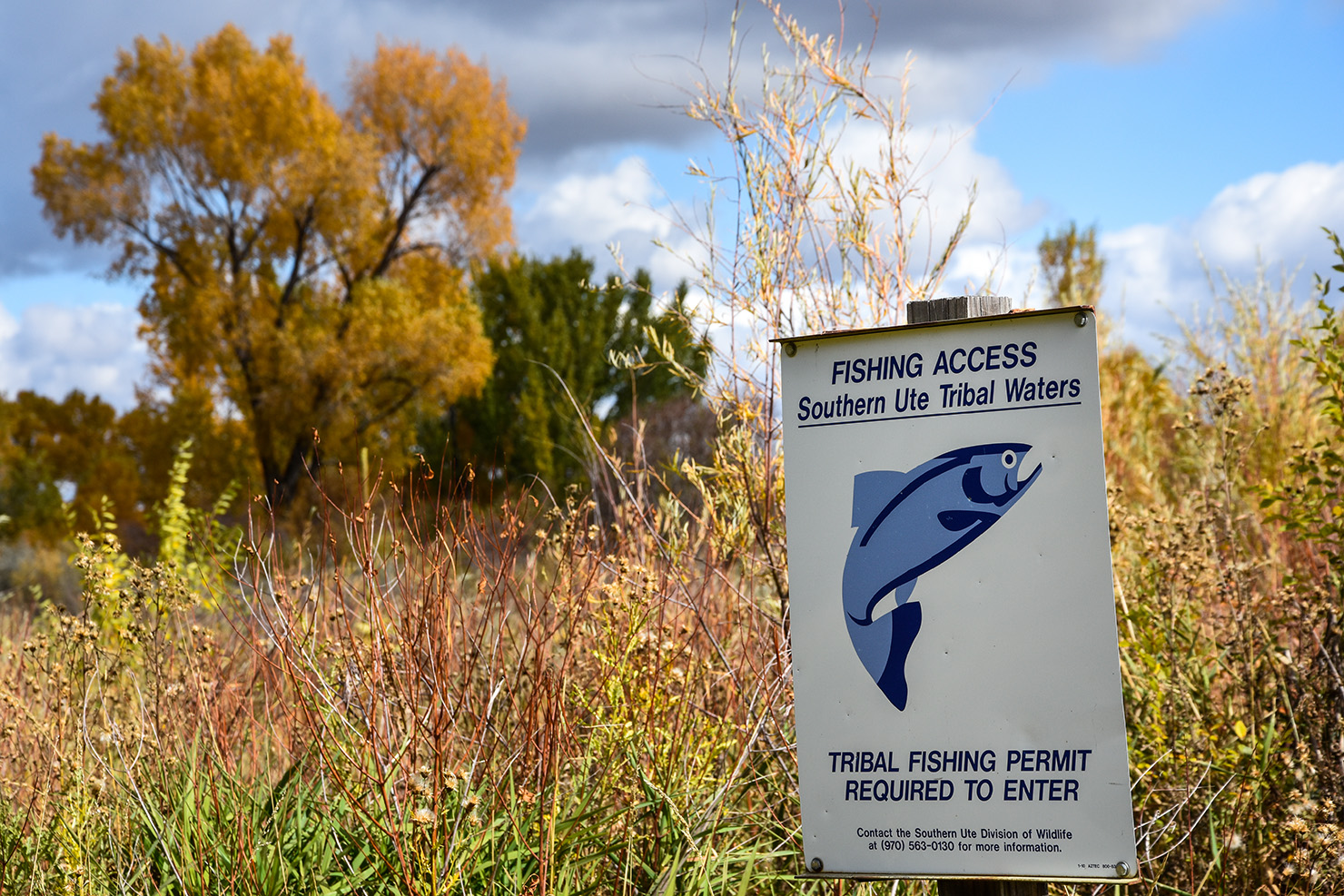The Southern Ute Wildlife Division staff took advantage of a rare opportunity on Monday, Oct. 9, and conducted a raft electrofishing survey on the Pine River through Ignacio. “Although we ‘shock’ the river using other equipment at least once a year, this is the first time in the last six years we’ve had the raft out on the Pine,” said Ben Zimmerman, Fisheries Biologist with the Tribe.
After launching at the Sundance Wildlife Area upstream from the town of Ignacio, the crew floated through reaches of river that are very often too low to float, or have poor clarity due to water that is returned from diversions. Along the way they captured over 150 brown trout, many over 20 inches in length, as well as native bluehead sucker, and spawning kokanee salmon that had run up the river from Navajo Lake. All of these species were identified, measured, and released back into the river.
Tribal member intern Brandon Silva said it was “hard work netting and handling all these fish, but it was awesome to see everything we have here in the Pine.”
Electrofishing is the primary method researchers use to capture fish in rivers and smaller streams. An electric field applied to the water can both attract and momentarily stun fish, allowing them to be caught in a handheld net. Fish generally recover from the shock within a few seconds of being placed in a holding tank. Larger rivers are usually “shocked” using a raft or other type of boat. On smaller streams crews often use “backpack shockers” or barges which are pushed along the surface of the water.
Continued monitoring of fisheries in the Pine will be of special interest in the near future, as two water management studies get underway. The Tribe’s Water Resources Division is working with the Nature Conservancy to conduct a Return Flow Study, focusing on opportunities to increase efficiency of irrigation while still fulfilling the needs of water users. A related Ecological Impact Study will help with understanding how improved efficiencies can positively impact the ecology of the river, of which healthy fish populations are a big part.
The Wildlife Division’s fish surveys are part of their efforts to manage Tribal fisheries for both recreational use, and the preservation of native fish species. Healthy populations of game fish, especially trout, are important to tribal member anglers and non-members who hold tribal fishing permits. At the same time, Southern Ute Wildlife Management staff seek to sustain and increase populations of ecologically important native fishes, including native suckers and roundtail chub. Division staff will continue to keep a close eye on fish populations in the Pine and its tributaries, and throughout the Southern Ute Reservation. They believe the upcoming water management studies will increase their understanding of how best to manage the fisheries of the Pine River Basin.
For more information about tribal waters and fisheries, including recreational opportunities, tribal members and the public are encouraged to contact the Southern Ute Wildlife Division.

